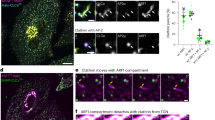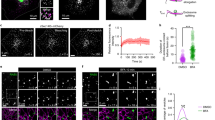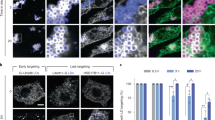Abstract
The secretory apparatus within all eukaryotic cells comprises a dynamic membrane system with bidirectional membrane transport pathways and overlapping compartmental boundaries. Membrane traffic and organelle biogenesis/maintenance are fundamentally linked within this system, with perturbations in membrane traffic quickly leading to changes in organelle structure and identity. Dissection of the molecular basis of these properties in yeast and mammalian cells has revealed a crucial role for the cytoplasmic protein complex ARF1/COPI, which undergoes regulated assembly and disassembly with membranes. ARF1/COPI appears to be involved in the formation and maintenance of the Golgi complex, which is the receiving and delivery station for all secretory traffic. ARF1-GTP, through assembly of COPI to membranes and, possibly, through activation of PLD, is likely to promote the formation and maturation of pre-Golgi intermediates into Golgi elements, whereas ARF-GDP causes COPI dissociation and stimulates the formation of retrograde transport structures that recycle Golgi membrane back to the ER. These processes are appear to underlie the coupling of organelle biogenesis and membrane trafficking within cells, allowing the size and shape of secretory organelles to be altered in response to changing cellular needs. Future work needs to address how the activation and localization of ARF1/COPI to membranes as well as other related factors are temporally and spatially regulated, and by what mechanism they transform membrane shape and dynamics to facilitate protein transport and compartmental functioning.
Similar content being viewed by others
Author information
Authors and Affiliations
Additional information
Accepted: 23 March 1998
Rights and permissions
About this article
Cite this article
Lippincott-Schwartz, J., Cole, N. & Donaldson, J. Building a secretory apparatus: role of ARF1/COPI in Golgi biogenesis and maintenance. Histochemistry 109, 449–462 (1998). https://doi.org/10.1007/s004180050247
Issue Date:
DOI: https://doi.org/10.1007/s004180050247




